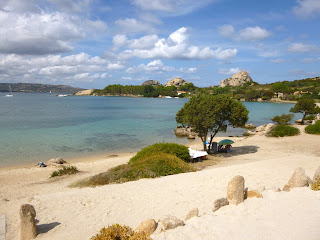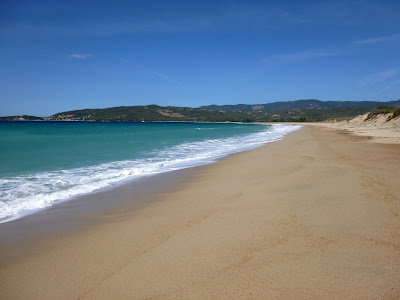 |
| Ride of a Lifetime in her alongside winter berth |
We are enjoying being in Italy and getting to know
Gaeta, our base for the winter months. It is a lovely, vibrant old town built on a peninsula lying midway between Rome and Naples. The town was originally a small settlement of
fishermen and farmers dating back to the seventh century and the old medieval quarter is dominated by the strategically
positioned imposing Angevin and
Aragonese Castle. We have a very useful alongside berth in the small, extremely
friendly, family run marina which is very conveniently situated in the centre
of town. The marina is full of predominantly Italian boats but there is a
cosmopolitan smattering of cruisers based here for the coming months to keep us
company.
 |
| The marina in Gaeta |
 |
| Our 189m neighbour, USS Mount Whitney |
 |
| Gulf of Gaeta |
Not long after we arrived in Gaeta the 189m US
navy and NATO command ship USS Mount Whitney docked just outside the marina. It
is alleged to be the most sophisticated command, control, communications, computer and intelligence ship ever commissioned. It is surrounded by a
security net and 24 hour patrols. We now have a huge and noisy next door neighbour.
The bugle sounds reveille at 8am every morning
followed by the Star-Spangled Banner. Throughout the day there are constant ringing
bells and loudspeeker announcements. We had armed guards patrolling the
pontoons last year in Tunisia. We now have a huge warship watching over us. Not
sure whether we feel safer or not!
 |
| View down to medieval Gaeta from Monte Orlando |
 |
| Serapo beach |
 |
| Bougainvillea in Gaeta old town |
Rising above the old city of Gaeta is the beautiful wooded Monte Orlando. It is a protected area with
various woodland trails that lead up to the mountain top and the Mausoleum of Lucius Plancus, a Roman consul in the 1st century BC. In need of some exercise we set off up the “dormouse” trail and followed the
path passing the many ruins of the formidable military fortifications of the Bourbon era. There were stunning views back down to Serapo
beach on one side of the peninsula and to medieval Gaeta and the Pontine islands in the hazy
distance on the other. We still have the "cliff" walk and the "ornithological" route to look forward to another day...
 |
| The Mausoleum of Lucius Plancus |
Church of St Francis and the Statue of Religion, Gaeta
 |
| Medieval Gaeta |





















































